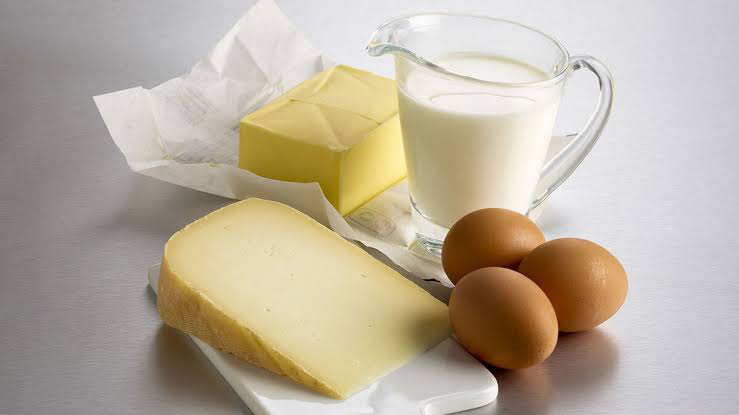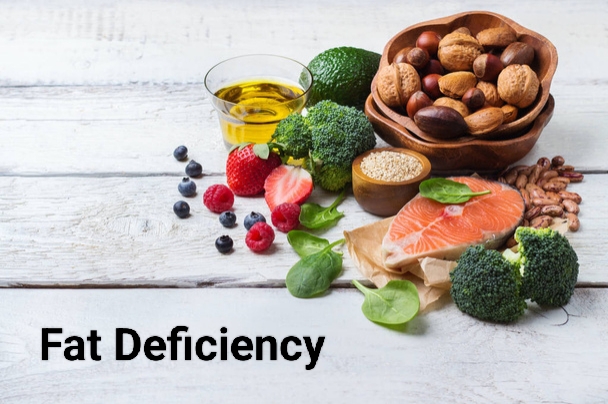Effects of Fat on health
Dietary fats are important for a healthy diet, providing 25-30% of our daily energy needs. However, producing fats affects the environment. It's crucial to make fats accessible to people who don't get enough, while also reducing fat consumption, especially animal fats, in areas where people eat too much. The amount of energy we get from fat in our diet can vary a lot, and we can still get all the nutrients we need. Health guidelines suggest that about 20% to 35% of our total calories should come from fat. At least 20% is needed to make sure we get enough energy, essential fatty acids, and fat-soluble vitamins.
Lipids
Lipids are a group of both polar and nonpolar compounds, such as triglycerides (TGs), diglycerides, monoglycerides, fatty acids, phospholipids, and sterols. In our diet, lipids add flavor, texture, and energy to food. In our bodies, lipids play many important roles. They provide a quick and stored source of energy, make up the structure and function of all cell membranes, and serve as precursors for eicosanoids and cell signaling molecules. Additionally, lipids help absorb fat-soluble vitamins and other food components.
The digestion of triglycerides (fats) is a detailed process. It starts in the mouth with enzymes called lingual lipases, and then continues in the stomach with other enzymes. In the stomach, fats are partly broken down into a crude mixture. This mixture then moves into the small intestine (duodenum), where it mixes with bile and pancreatic juice, which contain important enzymes like pancreatic lipase and colipase. These enzymes break down triglycerides into monoglycerides and fatty acids. These smaller fat molecules are absorbed by the cells lining the intestine (enterocytes).
This absorption happens through both specific protein transporters and by simple diffusion. Once inside these cells, fats are transported to the endoplasmic reticulum, where they are reassembled into larger particles called chylomicrons, and to a lesser extent, very low-density lipoproteins (VLDLs). Chylomicrons and VLDLs are then secreted from the enterocytes into the bloodstream. In the liver, fats can be further processed and packed into VLDLs. These lipoproteins carry fats to tissues, mainly adipose (fat) tissue. Here, an enzyme called lipoprotein lipase breaks down the fats, allowing the tissues to use them for energy or to store them.
Types of dietary fat
Dietary fats are classified into four types based on their chemical structure: monounsaturated fats, polyunsaturated fats, saturated fats, and trans fats.
Saturated fats - Since eating more saturated fats is linked to higher levels of LDL cholesterol (the "bad" cholesterol), it's recommended to keep saturated fat intake below 10% of your total daily calories. Saturated fats are mostly found in animal products and palm oil.
Monounsaturated fats - These fats aren’t necessary to include in our diet, so there are no specific daily recommendations for them. Monounsaturated fats are mainly found in fish, various plant oils, nuts, and seeds.
Polyunsaturated fats - Polyunsaturated fatty acids (PUFA) include essential fatty acids and have beneficial roles in human health.
Trans fats - There’s no safe level for consuming industrial trans fats, which are found in partially hydrogenated oils. These fats are harmful in several ways: they increase bad cholesterol (LDL), raise triglycerides, lower good cholesterol (HDL), boost inflammation, damage blood vessels, and might lead to fat buildup in the liver. Because of these risks, it’s best to avoid trans fats as much as possible.
Some scientists think that reducing saturated fat should remain a top priority because it raises LDL cholesterol and is linked to heart disease. They also believe that replacing saturated fat with polyunsaturated fats (PUFAs) is beneficial. If there aren't clear guidelines to limit saturated fat, ingredients high in saturated fat, like palm oil, might be added to foods. There's strong evidence showing that eating more PUFAs, whether instead of saturated fats or carbohydrates, is good for heart health.
Fats provide energy for humans, and some fats are essential for our health. One such fat is alpha-linolenic acid, an omega-3 fatty acid, found in walnuts, rapeseed oil, some legumes, flaxseed, and green leafy vegetables. Another essential fat is linoleic acid, an omega-6 fatty acid, important for cell function, immunity, and reproduction.
Toxicity/Health Risks
People can adapt to different levels of fat in their diets. Eating a lot of saturated fat (SFA) has been linked to a higher risk of obesity, type 2 diabetes, heart disease, and cancer. But recent research, partly because of the rise in popularity of low-carb, high-fat diets, is questioning some of these concerns. Additionally, not getting enough of the right balance of omega-6 and omega-3 fatty acids can also increase the risk of chronic diseases like cancer and heart disease.
Deficiencies
Dietary fat is a key source of energy. If we don't get enough fat, protein, or carbohydrates in our diet, our body won't have enough energy. This can lead to weight loss and can affect our growth. Most doctors agree that eating less fat can help reduce the risk of heart disease and related health problems. A low-fat diet is one where less than 30% of the total calories come from fat. A simple way to tell if a food is low in fat is to check if it has 3 grams or less of fat per 100 calories.
There's a lot of evidence suggesting that lowering serum cholesterol might help prevent atherosclerosis (the buildup of fatty deposits in arteries). One common approach to reduce cholesterol is cutting back on fat intake, which is why many doctors recommend low-fat diets to reduce heart disease risk.
However, there are some issues with low-fat diets. Many low-fat products on the market replace fat with a lot of refined carbohydrates, which can lead to problems like high triglycerides and metabolic disorders. Some studies show that diets high in carbohydrates and low in healthy fats can negatively affect cholesterol levels and increase heart disease risk. Additionally, there are concerns that low-fat diets might lower good HDL cholesterol, raise triglycerides, and cause unfavorable changes in blood fat levels after eating.
Food sources
Monounsaturated fats :-
- olive oil
- canola oil
- peanut oil
- avocados
- some nuts (almonds, pistachios, cashews, pecans and hazelnuts)
Polyunsaturated fats :-
- Fish (mackerel, sardines, herring, rainbow trout and salmon)
- canola and soybean oils
- omega-3 eggs
- flaxseed
- walnuts
- pecans
- pine nuts
Saturated fats :-
- fatty meats
- full-fat dairy products
- butter
- coconut oil
- ghee (clarified butter)
- vegetable ghee
- palm oil
- Fried foods (French fries, chips, other snack foods)
- Sugary foods (donuts, cakes, cookies)
Trans fats :-
Artificial trans fat was a type of fat that was added to some food products to improve taste and texture and extend their shelf life.
Dietary cholesterol :-
- egg yolks
- shrimp
- squid
- organ meats and fatty meats









Comments
Post a Comment